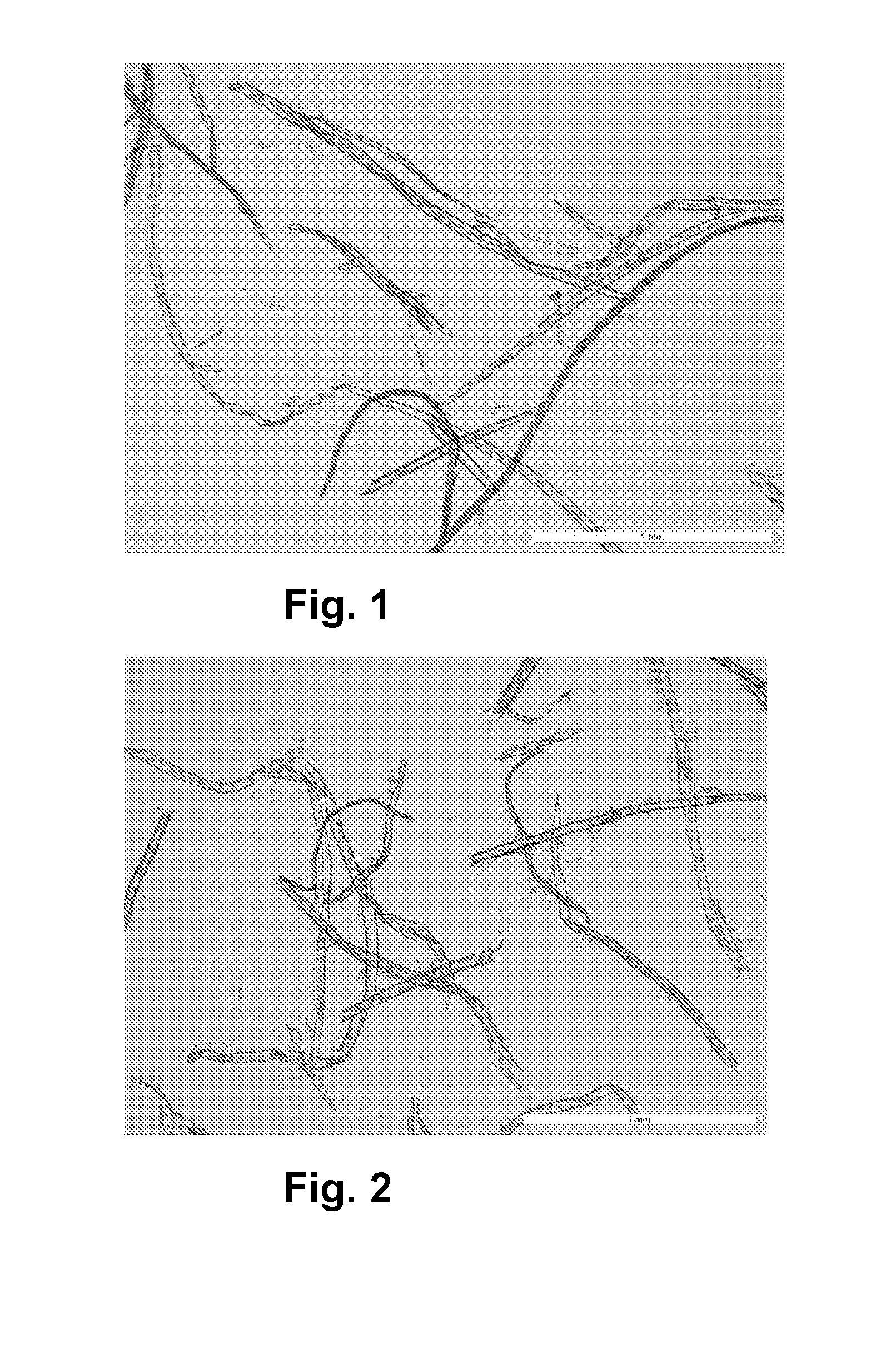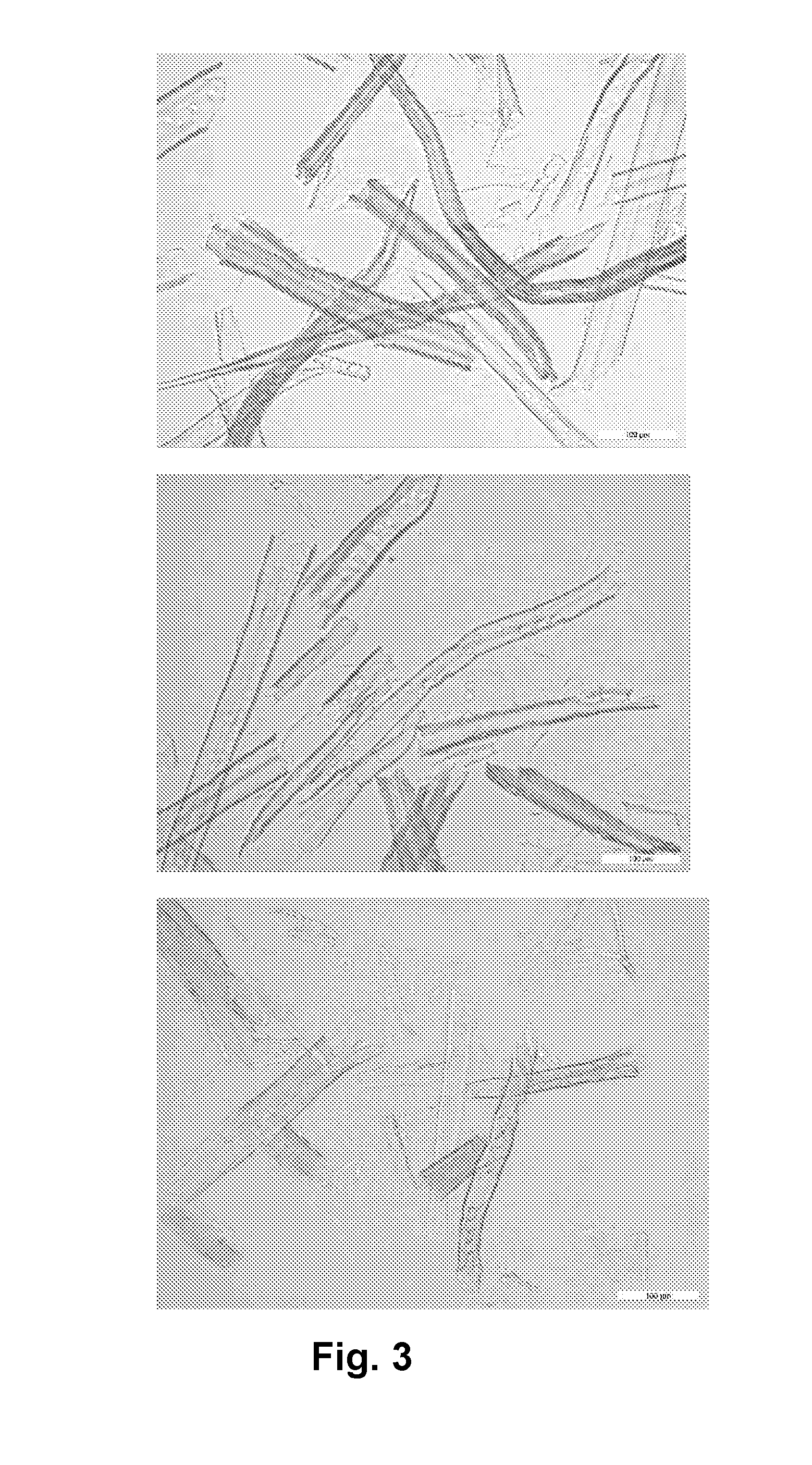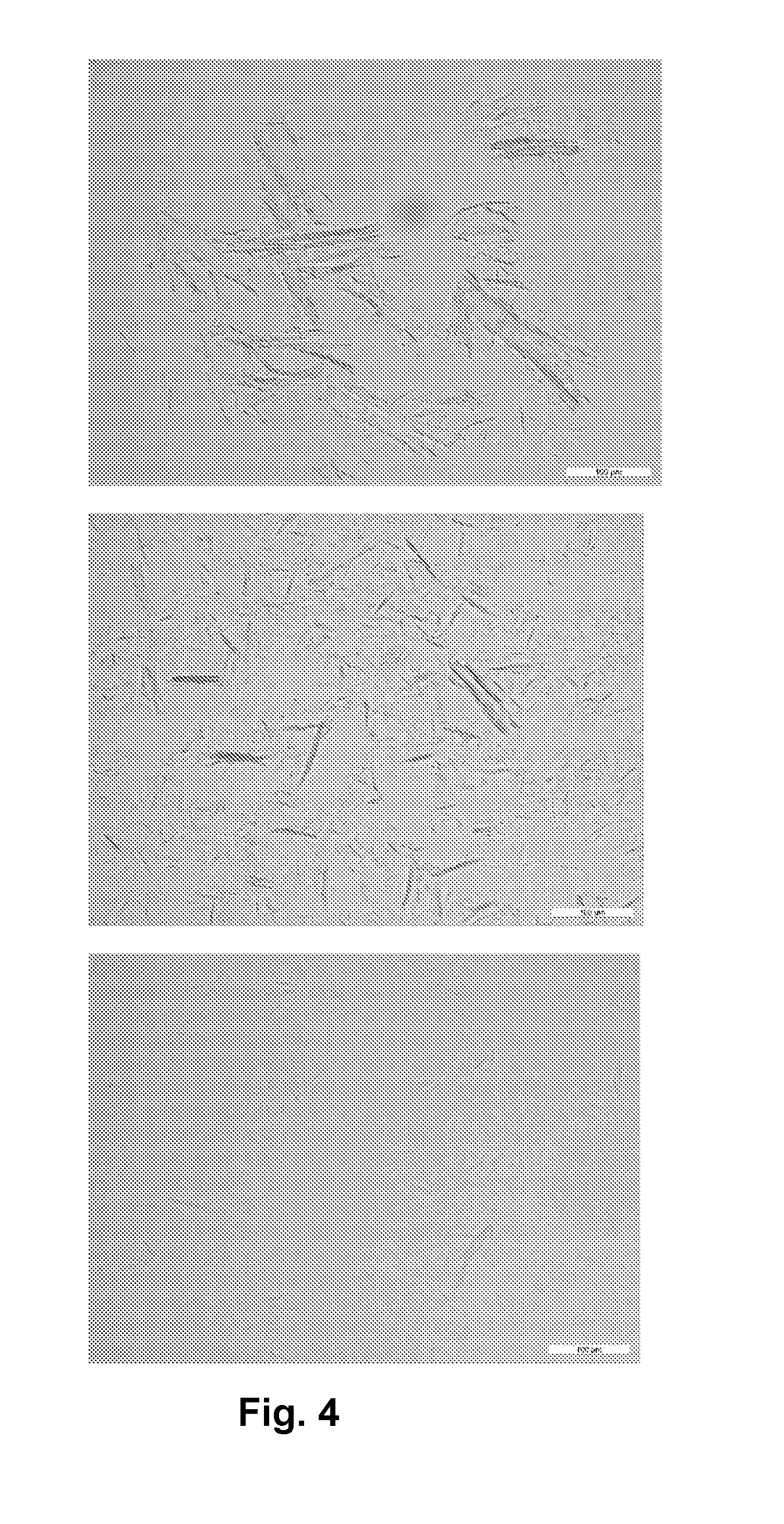A method of producing oxidized or microfibrillated cellulose
a microfibrillation and cellulose technology, applied in the field of oxidized cellulose production, to achieve the effect of reducing material costs, improving oxidative treatment of cellulose pulp, and reducing overall energy consumption
- Summary
- Abstract
- Description
- Claims
- Application Information
AI Technical Summary
Benefits of technology
Problems solved by technology
Method used
Image
Examples
example 2
High-Consistency Oxidation (Cellulose Consistency 20%)
[0056]Preparation of reagent solution: Sodium bromide (2 g, purity 99%) and Na2CO3·10 H2O (28.6 g, purity 98%) were dissolved in ion-exchanged water (200 ml). The pH of the solution was then adjusted to 10.2 with sodium bicarbonate. This solution was mixed with 148.9 g of aqueous sodium hypochlorite (10 wt-% solution, pH adjusted to 10.2 with 1 M HCl). The final pH was confirmed to be 10.2.
[0057]Mixing of reagent solution with pulp: 572.7 g of never-dried softwood kraft pulp (35 wt-% consistency) was placed in a dough mixer and the previously described reagent solution was added into pulp. After this the pulp was mixed for 90 minutes to evenly disperse sodium hypochlorite and sodium bromide.
[0058]TEMPO oxidation: TEMPO (0.312 g) was dissolved in 78 ml of ion-exchanged water. The solution was added into the pulp and the oxidation reaction was maintained for 90 minutes. Finally, 10 ml ethanol was added to eliminate the unreacted hy...
example 3
High-Consistency Oxidation with Plain Sodium Hypochlorite (Cellulose Consistency 20%, Theoretical DS for Oxidation 0.2)
[0064]Preparation of reagent solution: 22.8 g aqueous sodium hypochlorite (10 w-% solution) was diluted with ion-exchanged water (17.7 ml) and the pH of the solution was adjusted to 10.2 with 1 M HCl.
[0065]Mixing of reagent solution with pulp: 59.5 g never-dried kraft pulp (˜42 wt-% consistency) was mixed with the reaction solution and the pulp suspension was mixed with laboratory stirring device for 90 minutes to evenly disperse sodium hypochlorite. After this, 25 ml of sodium bicarbonate / sodium carbonate buffer solution (5 wt-% solution, pH 10.2) was added and the pulp was further mixed another 90 minutes.
[0066]Finally the pulp was diluted to 2 wt-% consistency with ion-exchanged water and homogenized with Ultra Turrax device. Clear disruption of fiber structure occurred by this treatment. It should be noticed that Ultra Turrax is a device that cannot produce fibr...
example 4
High-Consistency Oxidation with Sodium Hypochlorite and Sodium Bromide (Cellulose Consistency 20%)
[0067]Preparation of reagent solution: 22.8 g aqueous sodium hypochlorite (10 wt-% solution) was mixed with ion-exchanged water (17.7 ml) containing 0.16 g sodium bromide. The pH of the solution was adjusted to 10.2 with 1 M HCl.
[0068]Mixing of reagent solution with pulp: 59.5 g never-drid kraft pulp (˜42 wt-% consistency) was mixed with the reaction solution and the pulp suspension was mixed with laboratory stirring device for 90 minutes to evenly disperse sodium hypochlorite and sodium. After this, 25 ml of sodium bicarbonate / sodium carbonate buffer solution (5 w-% solution, pH 10.2) was added and the pulp was further mixed another 90 minutes.
[0069]Finally the pulp was diluted to 2% consistency with ion-exchanged water and homogenized with Ultra Turrax device. Clear disruption of fiber structure occurred by this treatment.
PUM
 Login to View More
Login to View More Abstract
Description
Claims
Application Information
 Login to View More
Login to View More - R&D
- Intellectual Property
- Life Sciences
- Materials
- Tech Scout
- Unparalleled Data Quality
- Higher Quality Content
- 60% Fewer Hallucinations
Browse by: Latest US Patents, China's latest patents, Technical Efficacy Thesaurus, Application Domain, Technology Topic, Popular Technical Reports.
© 2025 PatSnap. All rights reserved.Legal|Privacy policy|Modern Slavery Act Transparency Statement|Sitemap|About US| Contact US: help@patsnap.com



